I mentioned the other day receiving a note from a brother in the Burnt Chimney Volunteer Fire Department. Burnt Chimney is located in Franklin County, Va. near the land mark Smith Mountain Lake. I take all e-mails, comments etc seriously and try to reply to each of them. This one had a little special meaning.
 Sadly, I can’t find the note. I’ve honestly been covered in correspondence since the beginning of the Black Diamond Boots Fire/EMS Blog of the Year Contest and somehow or another it’s gotten lost in the shuffle. I don’t remember the Brother’s name and apologize. Burnt Chimney holds special meaning for me because that’s where I began my volunteer service. I have a lot of good memories from those days. I’ve somehow lost contact but I believe that the current Chief is an old and long time friend Timmy Jefferson “Bubba”.
Sadly, I can’t find the note. I’ve honestly been covered in correspondence since the beginning of the Black Diamond Boots Fire/EMS Blog of the Year Contest and somehow or another it’s gotten lost in the shuffle. I don’t remember the Brother’s name and apologize. Burnt Chimney holds special meaning for me because that’s where I began my volunteer service. I have a lot of good memories from those days. I’ve somehow lost contact but I believe that the current Chief is an old and long time friend Timmy Jefferson “Bubba”.
I have so many stories from those days that I wouldn’t know where to begin. Instead, I’ll just say that I’m thankful to have had the chance to serve the community and for the lessons I learned and took with me.
Yea .. I learned a lot from those days … good and bad. That brings me back to the note. The author mentioned that he’d like to see more “tips” or “tricks of the trade” on Ironfiremen. What a GREAT idea. In my own “style” I’ll try to hit some “tricks of the trade” from time to time (hopefully at least on a weekly basis … but we’ll see). Hang and stick with me as I work my way through some thoughts … I’m sure I’ll cover or get to where you were hoping I’d go. Anyhow, here’s your first …
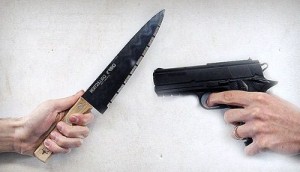 DON’T TAKE A KNIFE TO A GUN FIGHT !
DON’T TAKE A KNIFE TO A GUN FIGHT !
Don’t fool yourself …. firefighting is just that … a fight. Actually, it’s more like war than a simple fight and you have to approach it that way. You HAVE TO BE PREPARED.
I know this will sound “cliche ” but TRAINING is the best “Trick of the Trade”. You can’t train enough to be prepared for the fight of your life and don’t think for one second that the stakes aren’t that high.
I do remember that the author of the note was an Officer with BCVFD so I’d say ….train yourself and your members. I also remember that BCVFD held regular and weekly “training nights”. I hope you folks are continuing to do so. If not, start doing it again. Just the fact that you found my site means you’re looking. You were surfing the web looking for “something” fire related and stumbled upon me.
The Internet has become a HUGE resource for training. Just here, on the Fire/EMS Blog Network ; we have a TON of great sites that offer invaluable training tips.
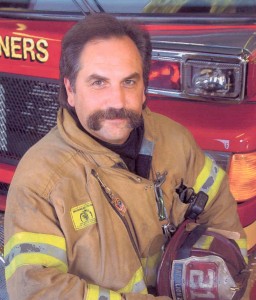 Take my good friend a Fire Service Leader Chris Naum for example. Chris has his hands in multiple sites and puts some great information at your finger tips each week. Here’s an excerpt of Chris’ bio… ” A 36-year fire service veteran and former Fire Chief/ Coordinator at a U.S nuclear power plant in the Northeastern United States, he is a nationally recognized authority on building construction, structural collapse and command management, and has traveled throughout the United States and internationally delivering training programs on building construction, command risk assessment and firefighter safety”
Take my good friend a Fire Service Leader Chris Naum for example. Chris has his hands in multiple sites and puts some great information at your finger tips each week. Here’s an excerpt of Chris’ bio… ” A 36-year fire service veteran and former Fire Chief/ Coordinator at a U.S nuclear power plant in the Northeastern United States, he is a nationally recognized authority on building construction, structural collapse and command management, and has traveled throughout the United States and internationally delivering training programs on building construction, command risk assessment and firefighter safety”
Chris’ sites are a MUST READ for every company Officer (for everyone on the job as far as that goes). Take the time to visit Buildings on Fire Command Safety and The Company Officer to better prepare yourself for the challenges that confront today’s fire service.
Chris also has a regular show called “Taking it to the Streets” over on Firefighter Netcast where, if you tune in and listen live; you’ll have the chance to call in a “pick his brain” personally.
Also on the Network, Bill Carey over at Backstep Firefighter always has great content and lessons to be learned. Keeping with the “network” theme, Brotherhood Instructors is another GREAT training site with an unbelievable stable of contributing writers.
Away from the network, make Vent Enter Search a daily check when you’re web browsing.
Don’t just do the “computer thing” either. Here in Va, we have a GREAT selection of classes from DFP happening every week. I know it’s a way off but coming up on September 22nd and 23rd the 4th Annual Fire Officer Seminar will be held at the Roanoke Civic Center. Visit the Roanoke Valley Regional Center site for more info … find that link HERE
DRESS FOR SUCCESS
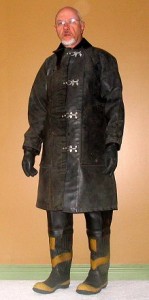 Ok … don’t take a knife to a gun fight….. be prepared! Training is just one aspect of being prepared. You must also “Dress for Success”. Seriously
Ok … don’t take a knife to a gun fight….. be prepared! Training is just one aspect of being prepared. You must also “Dress for Success”. Seriously
As cool as the old “night boots” and long coats looked, they are no longer practical. They offer no mobility, comfort or protection. Our PPE is in essence our “suit of armor” and you need to be wearing the best available.
I know a lot of smaller Departments often issue “surplus” gear to members. DON’T.
Every member should be measured and fitted for their own set of gear. Fit is everything!
Proper fitted PPE will keep you cooler while working. You’ll be better protected. It allows for better mobility thus conserving your energy. All this equals less stress on your body. A cooler, less fatigued, low stressed firefighter will (or should) have a lower heart rate. Boots are included a play a very big role in firefighter stress and fatigue. The “old school” rubber boots should be replaced with a fitted pair of leathers. Obviously, I’m partial to BLACK DIAMOND
Turnout gear wise, my Department wears Morning Pride. I was lucky enough to be on the committee that researched and choose our gear so I can tell ya that a TON of work went into our decision.
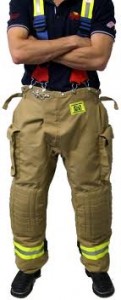 There are so many options available out there that you really need to be educated on before choosing a set. All gear is NOT the same. I used to think everyone made the same set and just put “their” tags or name on it. NOT TRUE. Something as simple as how the seams are stitched will allow for better movement in the knees and elbows.
There are so many options available out there that you really need to be educated on before choosing a set. All gear is NOT the same. I used to think everyone made the same set and just put “their” tags or name on it. NOT TRUE. Something as simple as how the seams are stitched will allow for better movement in the knees and elbows.
The same construction qualities allow firefighter movement while the cuffs (wrist and ankle) remain in place…. they don’t “ride up”.
Again, something that simple allows you to work safer and longer. You will be less fatigued and less stressed. Your core temperature and heart rate should remain lower as well which not only affects you short term but long term as well.
DRESS FOR SUCCESS ! Your choice of and the fit of your PPE makes a difference!
I know you were probably looking for “tactic tricks” and I’ll get to those but, the truth is; these “early” or pre-fire tricks are just as if not more important.
So, you’re trained and dressed for success. I’ll just briefly mention (at this time anyway) physical fitness. Having the right gear is useless as tits on a bull if you’re 100lbs over weight or out of shape. You’d be amazed at how many comments, e-mails etc I receive pertaining to CPAT . Most of them are about “failing” the test or on how rigorous it is. To do this job, you must be in shape. Heart attacks are a leading killer of firefighters and that’s unacceptable. I’ll have more on fitness in future post but for now, consider that another “trick”… hit the weight room, get in some sort of cardio etc DAILY. Don’t have a gym?? I have positions open here on the farm (LOL).
WORK IN PAIRS. I’m not talking another firefighter here (although we all know that is a MUST as well) I’m talking about choosing the right one and taking a tool with you.
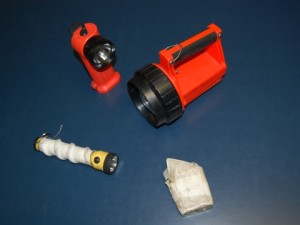 No matter your assignment, there is a tool to help you better perform your tasks. The right tool can provided needed leverage and protection. The length and style of your tool will be custom to your “territory”. If your first due is primarily single story ranch style homes, a 12′ hook is not needed and fighting it will cause undue exertion, stress etc.
No matter your assignment, there is a tool to help you better perform your tasks. The right tool can provided needed leverage and protection. The length and style of your tool will be custom to your “territory”. If your first due is primarily single story ranch style homes, a 12′ hook is not needed and fighting it will cause undue exertion, stress etc.
A simple, light weight tool that EVERY member should not only carry but be assigned is a flash light. There are several on the market today and the one you choose really doesn’t matter as long as you have one.
Personally, I carry a box light with a shoulder strap (with a seat belt type buckle to allow for easy removal should I become entangled). I wear my strap over my right shoulder, placing the light on my left side. I do this because I wear my radio on the right. My gear is set up (pocket contents etc) so that life safety (survival) is on the right and “accessory” type tools (I don’t carry a lot) are on my left.
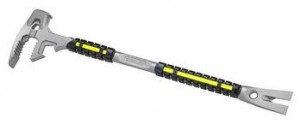 Every officer should carry a “tool” as well.
Every officer should carry a “tool” as well.
“Irons” are popular but are honestly of better use in a fireman’s hands. A good Officer tool should be functional, light weight and easy to carry.
Having a tool will allow you minimal breaching and breaking, it will assist you in searching or locating the seat of the fire. It may also be useful for self rescue or reaching / aiding a downed member.
Personally, I like the ” FUBAR” by Stanley tools. It has a good weight / length for swinging, breaching and breaking. It doesn’t slip in your hands when your gloves are wet. It carries well due to easy grip sections. It has multiple uses so it’s like carrying multiple tools at once. Check out Blue Ridge Rescue Suppliers or First Due Gear to find a toll that meets your needs.
Ok, so there ya have it …. a few simple yet life saving “Tricks of the Trade”. I’ll continue this “theme” in future post so stay tuned for more.
What are your “Tricks of the Trade”? Let me know and I’ll get them up here as well … this could make for a really cool column!
Anyway, I’ll check back later … until then, Stay Safe and in House!
Captain Wines.
 Iron Firemen Wooden Ladders & Iron Firemen
Iron Firemen Wooden Ladders & Iron Firemen